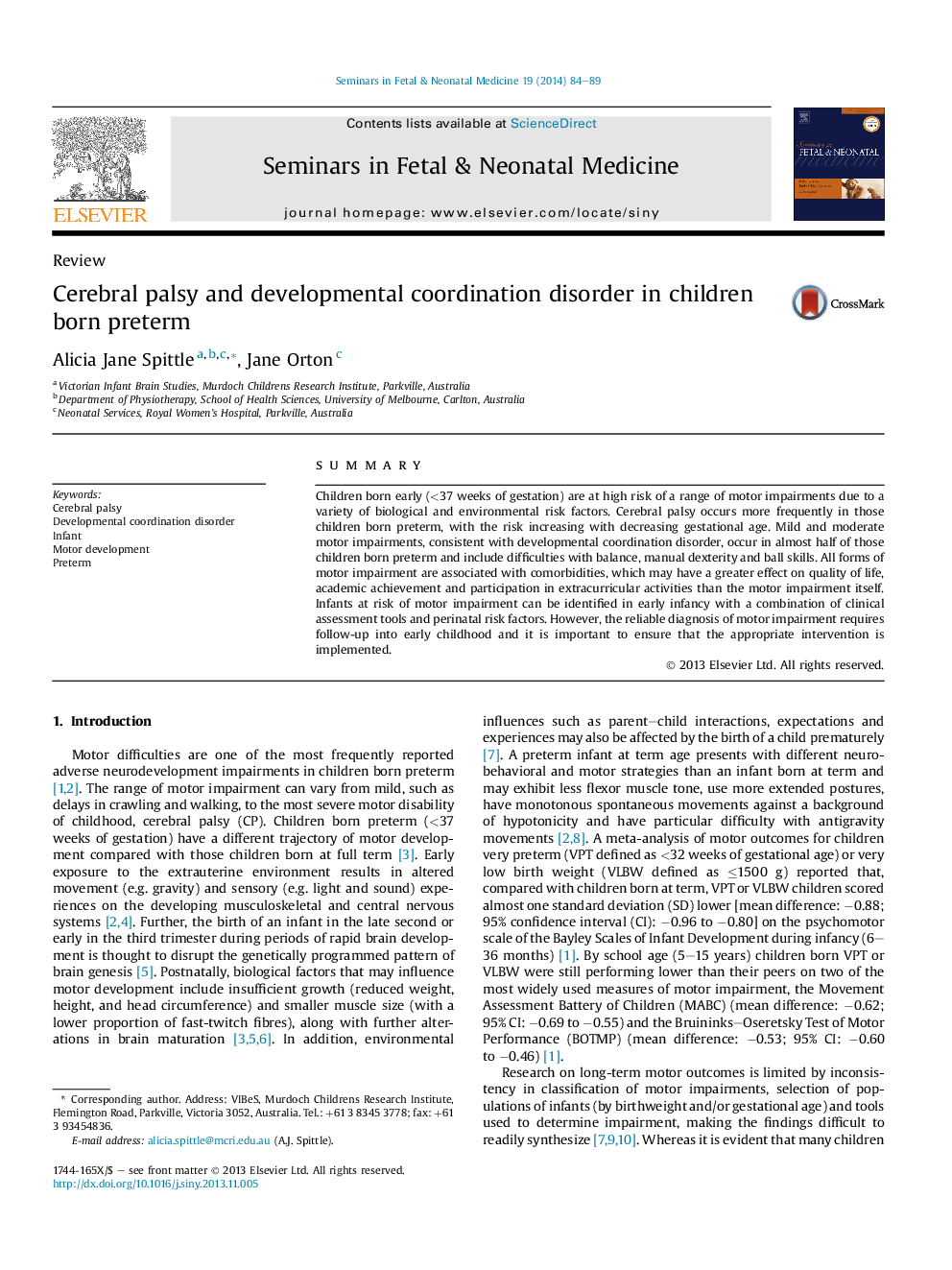| Article ID | Journal | Published Year | Pages | File Type |
|---|---|---|---|---|
| 3974318 | Seminars in Fetal and Neonatal Medicine | 2014 | 6 Pages |
SummaryChildren born early (<37 weeks of gestation) are at high risk of a range of motor impairments due to a variety of biological and environmental risk factors. Cerebral palsy occurs more frequently in those children born preterm, with the risk increasing with decreasing gestational age. Mild and moderate motor impairments, consistent with developmental coordination disorder, occur in almost half of those children born preterm and include difficulties with balance, manual dexterity and ball skills. All forms of motor impairment are associated with comorbidities, which may have a greater effect on quality of life, academic achievement and participation in extracurricular activities than the motor impairment itself. Infants at risk of motor impairment can be identified in early infancy with a combination of clinical assessment tools and perinatal risk factors. However, the reliable diagnosis of motor impairment requires follow-up into early childhood and it is important to ensure that the appropriate intervention is implemented.
